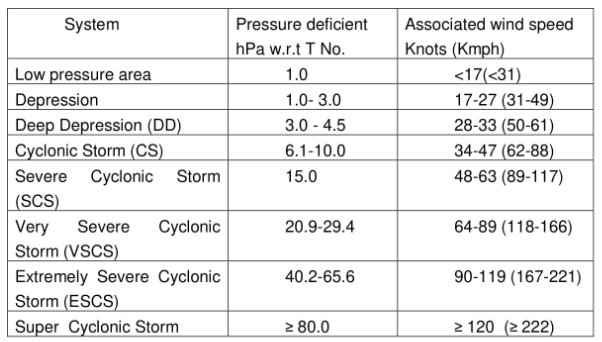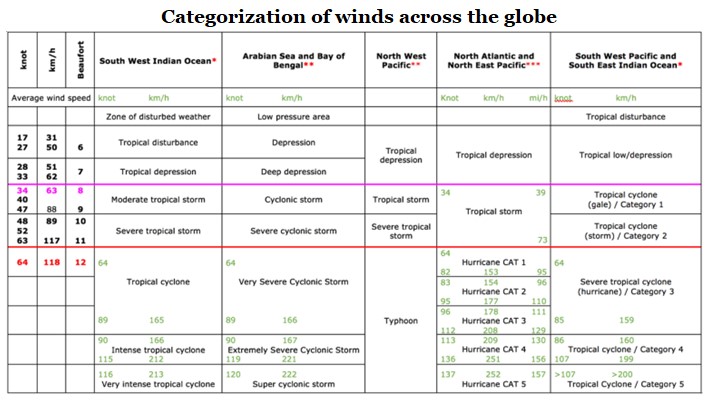Recently Hurricane Milton rapidly intensified to Category 5 storm in less than a day on a path across the Gulf of Mexico toward Florida and became one of the strongest Atlantic storms.

|
Cyclone Category |
Wind Speed in Km/h |
Damage Capacity |
|
01 |
120-150 |
Minimal |
|
02 |
150-180 |
Moderate |
|
03 |
180-210 |
Extensive |
|
04 |
210-250 |
Extreme |
|
05 |
250 and above |
Catastrophic |

|
Saffir-Simpson Hurricane Wind Scale |
||
|
Category |
knots |
km/h |
|
5 |
≥ 137 |
≥ 252 |
|
4 |
113–136 |
209–251 |
|
3 |
96–112 |
178–208 |
|
2 |
83–95 |
154–177 |
|
1 |
64–82 |
119–153 |
|
TS |
34–63 |
63–118 |
|
TD |
≤ 33 |
≤ 62 |
Cyclone Milton’s wind speed went from 80 mph to 175 mph from 1 p.m. Sunday to 1 p.m. Monday, and its pressure dropped from 988 millibars to 911.
Wind sheer is the change in wind speed or direction with height.
Warmer waters provide the heat needed for moisture to evaporate, while lower salinity helps trap that heat near the surface.